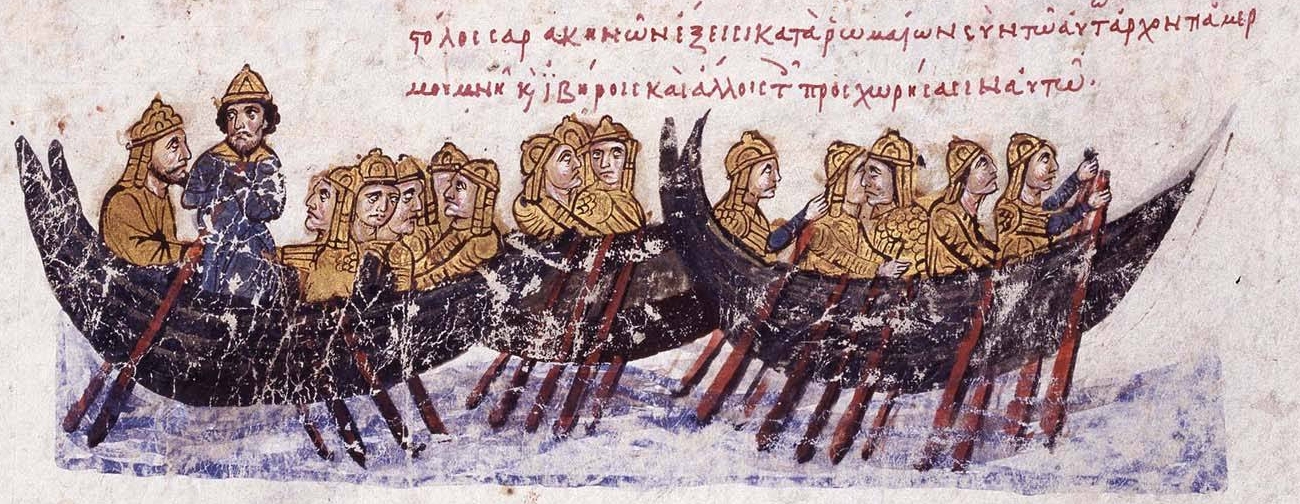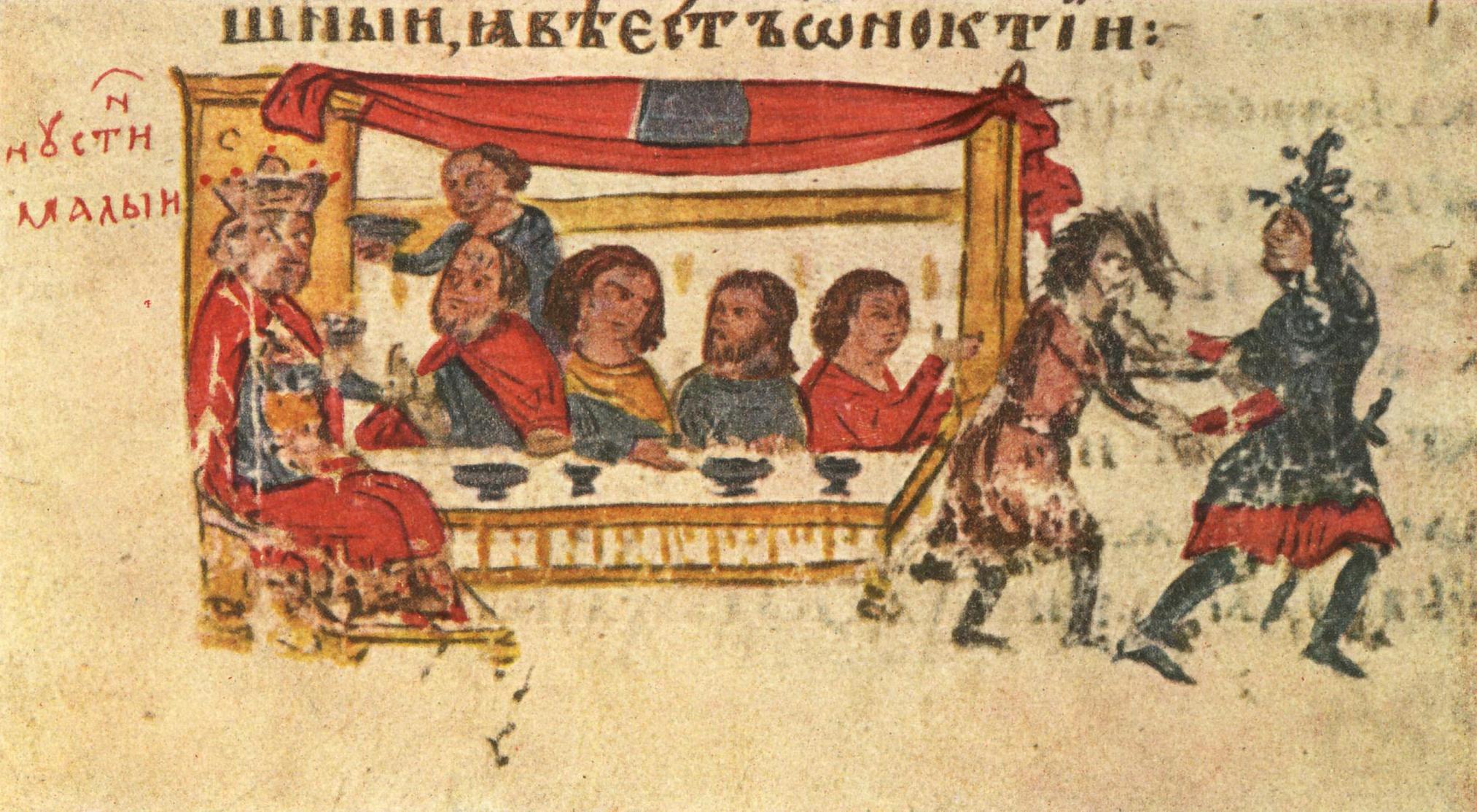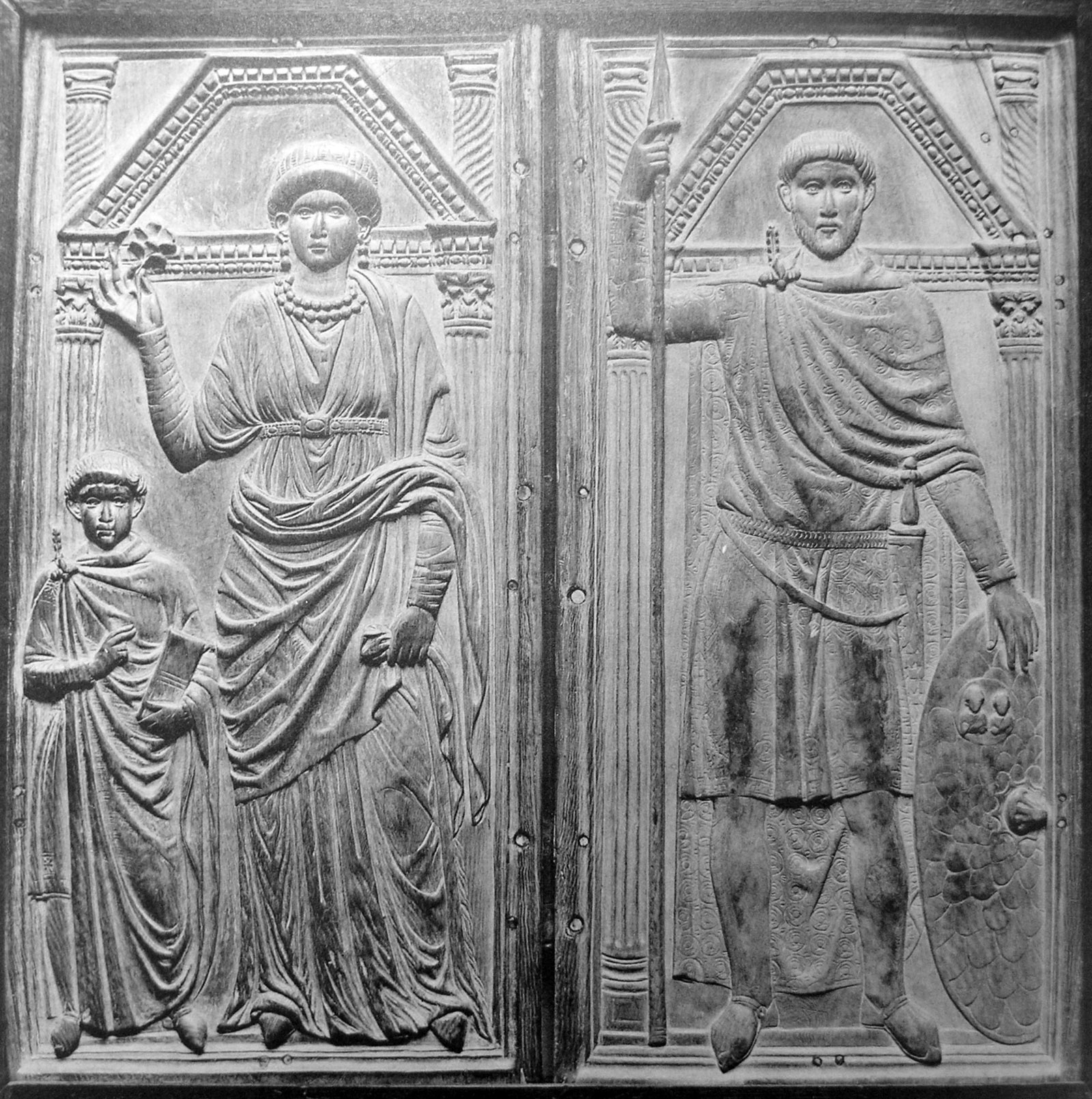|
Komes Tou Stablou
The Count of the Stable ( la, comes stabuli; grc-gre, κόμης τοῦ σταύλου/στάβλου, komes tou staulou/stablou) was a late Roman and Byzantine office responsible for the horses and pack animals intended for use by the army and the imperial court. From Byzantium, it was adopted by the Franks, and is the origin of the post and title of constable, via the Old French . History and functions The post first appears in the 4th century as the ('tribune of the acredstable'), initially responsible for the levying of horses from the provinces.. According to Ammianus Marcellinus, the holders of the post ranked equal to the tribunes of the guard regiments. In the , they are listed as the under the .. , XIV.6. By the early 5th century, as attested in the , they were raised to with the rank of , but the older title of tribune remained in parallel use for some time (cf. , 6.13.1). Eight holders of the office are known from the 4th century, including Emperor Valens () and ... [...More Info...] [...Related Items...] OR: [Wikipedia] [Google] [Baidu] |
Roman Empire
The Roman Empire ( la, Imperium Romanum ; grc-gre, Βασιλεία τῶν Ῥωμαίων, Basileía tôn Rhōmaíōn) was the post- Republican period of ancient Rome. As a polity, it included large territorial holdings around the Mediterranean Sea in Europe, North Africa, and Western Asia, and was ruled by emperors. From the accession of Caesar Augustus as the first Roman emperor to the military anarchy of the 3rd century, it was a Principate with Italia as the metropole of its provinces and the city of Rome as its sole capital. The Empire was later ruled by multiple emperors who shared control over the Western Roman Empire and the Eastern Roman Empire. The city of Rome remained the nominal capital of both parts until AD 476 when the imperial insignia were sent to Constantinople following the capture of the Western capital of Ravenna by the Germanic barbarians. The adoption of Christianity as the state church of the Roman Empire in AD 380 and the fall of the Western ... [...More Info...] [...Related Items...] OR: [Wikipedia] [Google] [Baidu] |
Vir Clarissimus
The constitution of the late Roman Empire was an unwritten set of guidelines and principles passed down, mainly through precedent, which defined the manner in which the late Roman Empire was governed. As a matter of historical convention, the late Roman Empire emerged from the Roman Principate (the early Roman Empire), with the accession of Diocletian in AD 284, his reign marking the beginning of the Tetrarchy. The constitution of the Dominate outrightly recognized monarchy as the true source of power, and thus ended the facade of dyarchy, in which emperor and Senate governed the empire together. Diocletian's reforms to the Imperial government finally put an end to the period when the old Republican magistracies (e.g. consuls and praetors) held real powers. From then, the consuls had almost no real duties beyond that of presiding at Senate meetings and the duties of the lesser magistrates were effectively just hosting various games, e.g. chariot racing. Most other lesser magistr ... [...More Info...] [...Related Items...] OR: [Wikipedia] [Google] [Baidu] |
Stratarchai
( el, στρατάρχης, pl. (archaic) or (modern)), means ''ruler of the army'' in Greek, and is a title associated with successful generals. In modern Greek usage, it corresponds to the rank of Field Marshal. Byzantine Empire The term originated in the Byzantine Empire, where, in the 9th to 11th centuries, the were a class of senior officials in charge of military finances and administration, including the (commander of the foreign imperial guards), the ''droungarios'' of the Fleet, the who supervised the army's horse-breeding farms, the (Count of the Stable) and the of the . By the late 11th century, this technical meaning was forgotten, and the term , along with variants such as ('grand ') and ('all-'), came to be used as an honorific epithet for important generals. In this use it is for instance used to describe the famed literary hero Digenis Akritas, or famous past commanders, such as Belisarius. Modern Greece In modern Greek history, the title (modern ... [...More Info...] [...Related Items...] OR: [Wikipedia] [Google] [Baidu] |
Emirate Of Crete
The Emirate of Crete ( ar, إقريطش, Iqrīṭish or , ''Iqrīṭiya''; gr, Κρήτη, Krētē) was an Islamic state that existed on the Mediterranean island of Crete from the late 820s to the reconquest of the island by the Byzantine Empire in 961. Although the emirate recognized the suzerainty of the Abbasid Caliphate and maintained close ties with Tulunid Egypt, it was ''de facto'' independent. A group of Andalusian exiles led by Abu Hafs Umar al-Iqritishi conquered Crete in either 824 or 827/828, and established an independent Islamic state. The Byzantines launched a campaign that took most of the island back in 842-43 under Theoktistos, but the reconquest was not completed and would soon be reversed. Later attempts by the Byzantine Empire to recover the island failed, and for the approximately 135 years of its existence, the emirate was one of the major foes of Byzantium. Crete commanded the sea lanes of the Eastern Mediterranean and functioned as a forward base and ... [...More Info...] [...Related Items...] OR: [Wikipedia] [Google] [Baidu] |
Saracens
upright 1.5, Late 15th-century German woodcut depicting Saracens Saracen ( ) was a term used in the early centuries, both in Greek and Latin writings, to refer to the people who lived in and near what was designated by the Romans as Arabia Petraea and Arabia Deserta. The term's meaning evolved during its history of usage. During the Early Middle Ages, the term came to be associated with the tribes of Arabia. The oldest known source mentioning "Saracens" in relation to Islam dates back to the 7th century, in the Greek-language Christian tract ''Doctrina Jacobi''. Among other major events, the tract discusses the Muslim conquest of the Levant, which occurred after the rise of the Rashidun Caliphate following the death of the Islamic prophet Muhammad. The Roman-Catholic church and European Christian leaders used the term during the Middle Ages to refer to Muslims—usually Arabs, Turks, and Iranians. By the 12th century, "Saracen" had become synonymous with "Muslim" in M ... [...More Info...] [...Related Items...] OR: [Wikipedia] [Google] [Baidu] |
Protospatharios
''Prōtospatharios'' ( el, πρωτοσπαθάριος) was one of the highest court dignities of the middle Byzantine period (8th to 12th centuries), awarded to senior generals and provincial governors, as well as to foreign princes. History The meaning of the title, "first '' spatharios''", indicates its original role as leader of the order (''taxis'') of the ''spatharioi'', the imperial bodyguards, was already attested in the 6th century. Probably under the Heraclians, the rank became an honorary dignity (Greek: δια βραβείου ἀξία, ''dia brabeiou axia''), and was henceforth bestowed to high-ranking theme commanders, senior court officials, and allied rulers.. The first concrete reference to a ''prōtospatharios'' occurs in the ''Chronicle'' of Theophanes the Confessor, who records "Sergios, ''prōtospatharios'' and '' stratēgos'' of Sicily" in 718. In the late 9th century, the ''prōtospatharios'' is recorded as ranking below the ''patrikios'' and above the '' ... [...More Info...] [...Related Items...] OR: [Wikipedia] [Google] [Baidu] |
Theophanes The Confessor
Theophanes the Confessor ( el, Θεοφάνης Ὁμολογητής; c. 758/760 – 12 March 817/818) was a member of the Byzantine aristocracy who became a monk and chronicler. He served in the court of Emperor Leo IV the Khazar before taking up the religious life. Theophanes attended the Second Council of Nicaea in 787 and resisted the iconoclasm of Leo V the Armenian, for which he was imprisoned. He died shortly after his release. Theophanes the Confessor, venerated on 12 March in both the Eastern Orthodox and the Roman Catholic churches, should not be confused with Theophanes of Nicaea, whose feast is commemorated on 11 October. Biography Theophanes was born in Constantinople of wealthy and noble iconodule parents: Isaac, governor of the islands of the Aegean Sea, and Theodora, of whose family nothing is known. His father died when Theophanes was three years old, and the Byzantine Emperor Constantine V (740–775) subsequently saw to the boy's education and upbringing a ... [...More Info...] [...Related Items...] OR: [Wikipedia] [Google] [Baidu] |
Justin II
Justin II ( la, Iustinus; grc-gre, Ἰουστῖνος, Ioustînos; died 5 October 578) or Justin the Younger ( la, Iustinus minor) was Eastern Roman Emperor from 565 until 578. He was the nephew of Justinian I and the husband of Sophia, the niece of the Empress Theodora, and was therefore a member of the Justinian dynasty. Justin II inherited a greatly enlarged but overextended empire, with far less resources at his disposal compared to Justinian I. Despite this, he strived to match his formidable uncle's reputation by abandoning the payment of tributes to the Empire's neighbors. This miscalculated move resulted in rekindling of war with the Sassanid Empire, and in a Lombard invasion which cost the Romans much of their territory in Italy. Family He was a son of Vigilantia and Dulcidio (sometimes rendered as Dulcissimus), respectively the sister and brother-in-law of Justinian. His siblings included Marcellus and Praejecta. With Sophia he had a daughter Arabia and poss ... [...More Info...] [...Related Items...] OR: [Wikipedia] [Google] [Baidu] |
Baduarius
Baduarius ( el, Βαδουάριος) was an East Roman aristocrat, the son-in-law of Byzantine emperor Justin II (r. 565–578). Theophanes the Confessor erroneously calls him a brother of the Emperor.. Biography Possibly the son or grandson of a similarly named general active in Scythia Minor in 528, Baduarius is recorded by the Latin epic poet Flavius Cresconius Corippus as having succeeded Justin in his post as ''curopalates'' immediately after the latter's rise to the Byzantine throne on November 14, 565. At the time, he was already a holder of the rank of ''patrikios''. In circa 566/567, Baduarius was ordered to raise an army in the lower Danube (Moesia and Scythia Minor) in order to assist the Gepids against the Lombards. The Byzantines won the first battle, but then the Gepid king Cunimund refused to hand back Sirmium as he had promised. Left unaided against the Lombards and Avars, Cunimund was defeated and killed. The post of Baduarius in this campaign is obscure: he m ... [...More Info...] [...Related Items...] OR: [Wikipedia] [Google] [Baidu] |
Belisarius
Belisarius (; el, Βελισάριος; The exact date of his birth is unknown. – 565) was a military commander of the Byzantine Empire under the emperor Justinian I. He was instrumental in the reconquest of much of the Mediterranean territory belonging to the former Western Roman Empire, which had been lost less than a century prior. One of the defining features of Belisarius' career was his success despite varying levels of available resources. His name is frequently given as one of the so-called "Last of the Romans". He conquered the Vandal Kingdom of North Africa in the Vandalic War in nine months and conquered much of Italy during the Gothic War. He also defeated the Vandal armies in the battle of Ad Decimum and played an important role at Tricamarum, compelling the Vandal king, Gelimer, to surrender. During the Gothic War, despite being significantly outnumbered, he and his troops recaptured the city of Rome and then held out against great odds during the sieg ... [...More Info...] [...Related Items...] OR: [Wikipedia] [Google] [Baidu] |
Flavius Aetius
Aetius (also spelled Aëtius; ; 390 – 454) was a Roman general and statesman of the closing period of the Western Roman Empire. He was a military commander and the most influential man in the Empire for two decades (433454). He managed policy in regard to the attacks of barbarian federates settled throughout the West. Notably, he mustered a large Roman and allied (''foederati'') army in the Battle of the Catalaunian Plains, ending a devastating invasion of Gaul by Attila in 451, though the Hun and his subjugated allies still managed to invade Italy the following year, an incursion best remembered for the ruthless Sack of Aquileia and the intercession of Pope Leo I. Aetius has often been called, "Last of the Romans". Edward Gibbon refers to him as "the man universally celebrated as the terror of Barbarians and the support of the Republic" for his victory at the Catalaunian Plains. J.B Bury notes, "That he was the one prop and stay of the Western Empire during his life tim ... [...More Info...] [...Related Items...] OR: [Wikipedia] [Google] [Baidu] |
Serena (wife Of Stilicho)
Serena (died 409) was a Theodosian imperial woman, niece of Theodosius I. In 384, Theodosius arranged her marriage to a rising military officer, Stilicho.Stephen Williams & Gerard Friell, ''Theodosius: the Empire at Bay'', (Routledge, 1994): 42, 189 Stilicho's marriage to Serena ensured his loyalty to the House of Theodosius in the years ahead. A resident at the court of her cousin, Honorius, she selected a bride for the court poet, Claudian, and took care of Honorius' half-sister, her cousin Galla Placidia. She and Stilicho had a son, Eucherius, and two daughters, Maria and Thermantia, successively the first and second wives of Honorius. According to the pagan historian Zosimus, Serena took a necklace from a statue of Rhea Silvia and placed it on her own neck, however this was later dismissed; Serena was not a pagan and did not associate with them. Stilicho was executed on Honorius' orders in 408. During the siege of Rome by the Visigoths The Visigoths (; la, Vi ... [...More Info...] [...Related Items...] OR: [Wikipedia] [Google] [Baidu] |






